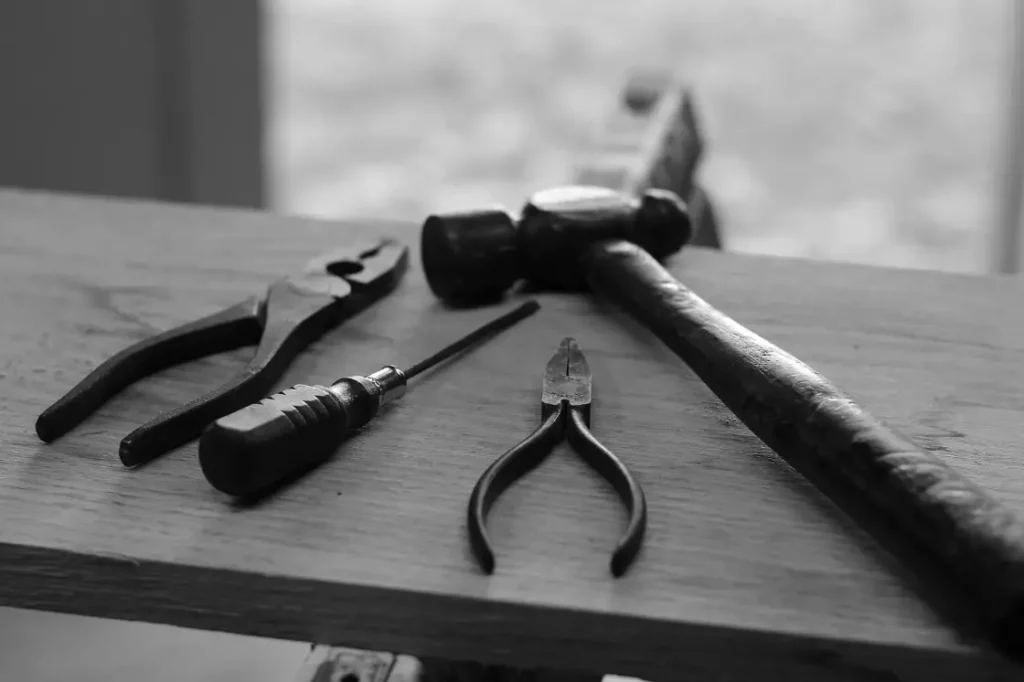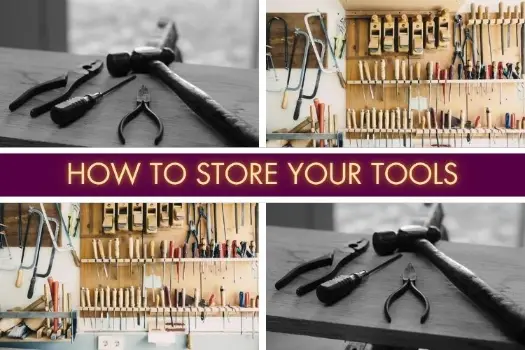The shed stands as an abode for the tools—each possessing its role and place until summoned for another task. Yet, this is more than mere storage; it’s an intricate choreography of safety, longevity, and preparedness. Here’s an exhaustive guide on ensuring your tools are stored securely and safely within your shed:
The Ritual of Thorough Cleaning

Before bidding adieu to your trusty tools for their dormant phase, embark on a cleansing endeavor. Rid them of the remnants of past tasks—dirt, grime, and moisture. For metallic comrades, a gentle application of oil safeguards against the relentless forces of rust and corrosion, preserving their vitality for future exploits.
Orchestrate Organization
Just as a conductor arranges an orchestra, categorize and sort your tools. This isn’t solely about ease of retrieval; it’s a strategic defense against the chaos of mingling tools. Allocate prime spots for frequently used tools and designate specific zones or containers for distinct categories.
Invest in storage aides—pegboards, shelves, cabinets, or tool chests transform the shed into an organized haven. Pegboards offer visibility and accessibility, while cabinets and chests provide sanctuary, shielding smaller comrades from the perils of dust and moisture. You can even find container storage options for larger items. Look for a company that is safe, secure, and accessible.
Vertical Mastery: Walls and Ceilings

Conquer the vertical expanse; liberate floor space by harnessing walls and ceilings for storage. Racks, hooks, and magnetic strips can suspend tools artfully, emancipating the ground and reducing the risk of unexpected encounters with scattered implements.
For the larger brethren among your tools—lawnmowers, chainsaws, or wheelbarrows—bolster their security. Employ locks or security systems to deter prying eyes and tether the weighty titans to shed walls or floors to thwart unruly tipping.
Shield Against the Clutches of Moisture
Moisture, an unyielding adversary, can wreak havoc on your tools. Employ moisture-absorbing allies like silica gel or desiccants to govern humidity levels. In damp environments, a dehumidifier becomes a stalwart ally, maintaining an environment conducive to the longevity of your tools. Most importantly, ensure your shed has proper ventilation to prevent moisture buildup. This will not only protect your tools but also prevent potential damage to the shed’s structure.
Vigilance Through Regular Maintenance
Enforce a regimen of routine tool inspections. Scrutinize for signs of rust, wear, or damage. Swiftly replace or repair compromised tools to arrest further decline and sustain their operational prowess.
Grant identities to storage receptacles and drawers; let labels guide the way. A comprehensive inventory of your tool armory not only streamlines the organization but also acts as a sentinel, guarding against missing or misplaced assets.
Fire Safety Rituals
Identify flammable entities—solvents, gasoline, or oily rags—and grant them an isolated, well-ventilated haven far from sparks or sources of ignition, ensuring the sanctuary remains impervious to fire hazards.
Nurture the shed itself; it is the sanctum for your tools. Mend leaky roofs, seal cracks, and breaches, and maintain cleanliness to dissuade pests from vandalizing your arsenal or claiming the shed as their own domain.
Conclusion
In the meticulous application of these practices, your tools shall reside in their shed fortress, shielded from harm, readily accessible, and, most significantly, ensconced in a haven where safety and order reign supreme. For in proper storage lies the key to safeguarding your tools, fostering a secure workspace, and ensuring they stand the test of time, ever prepared for their next noble quest.






